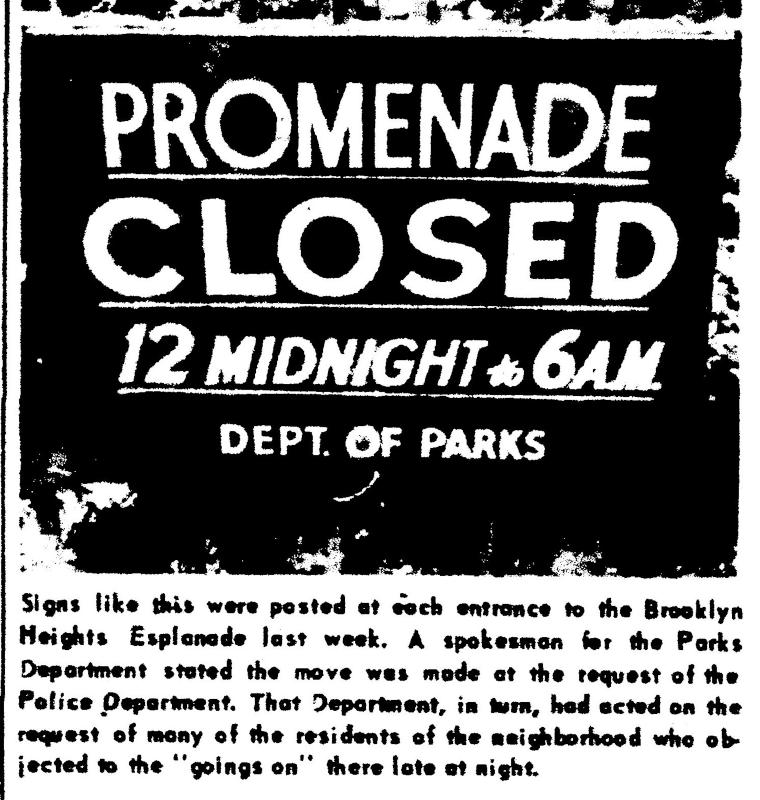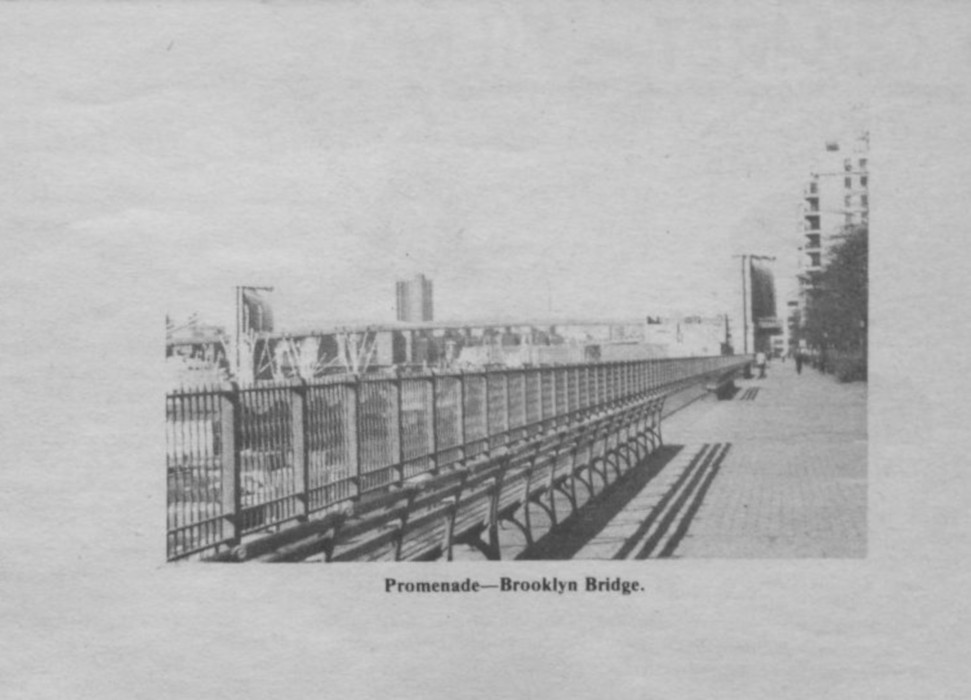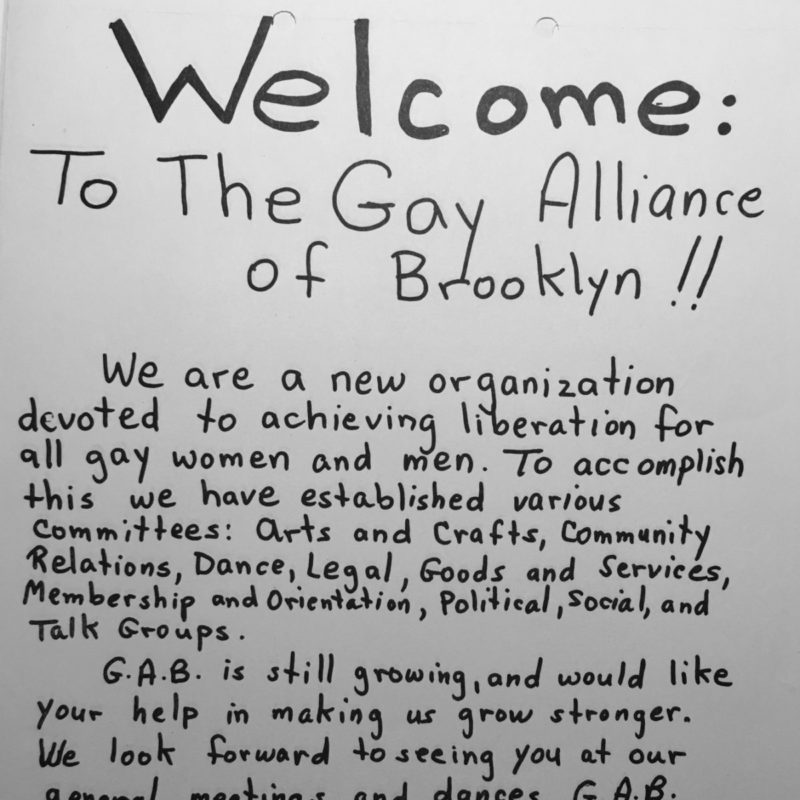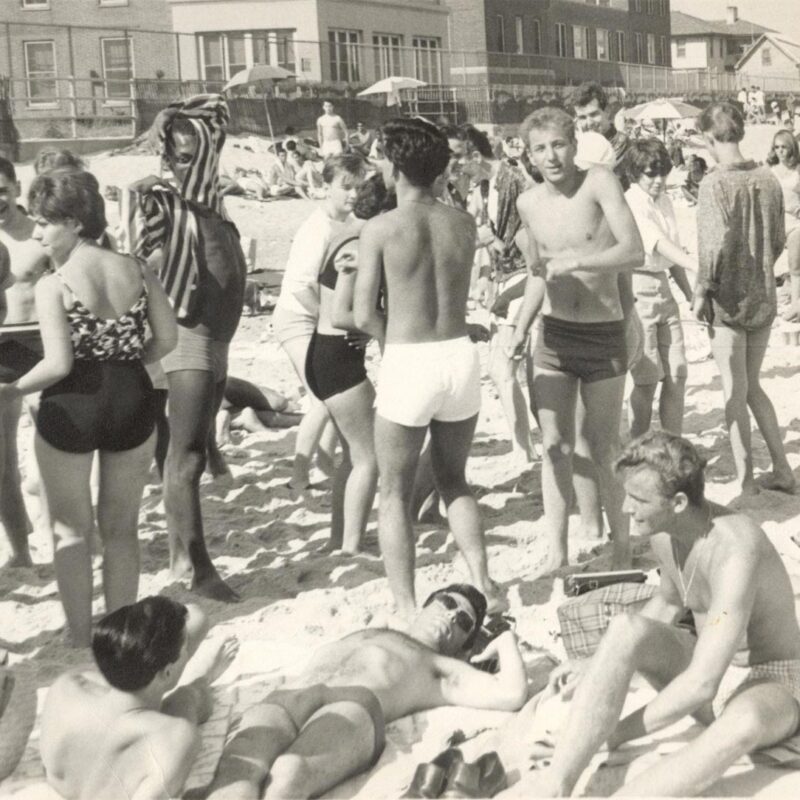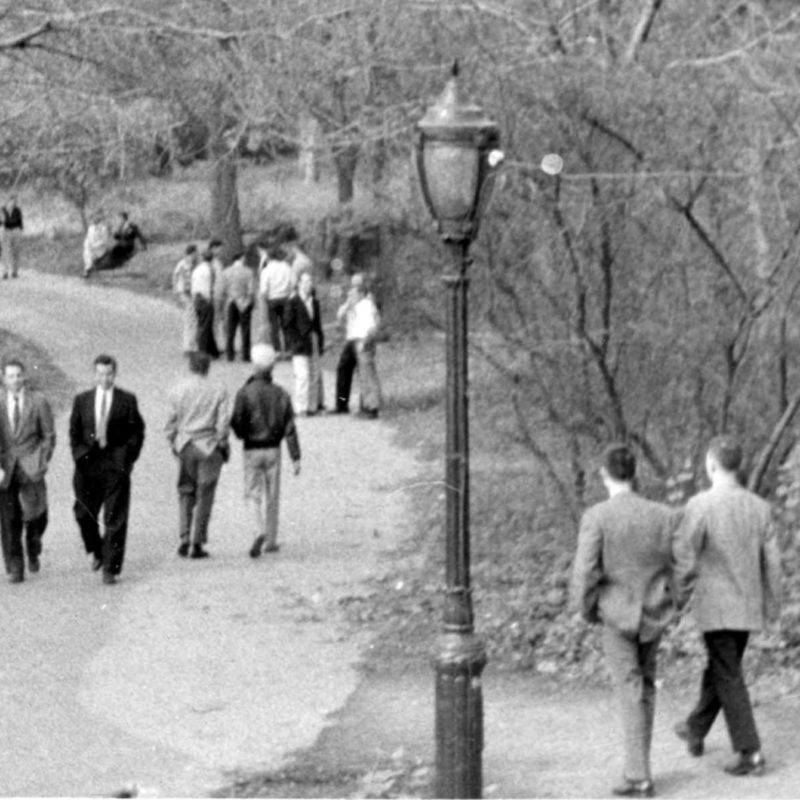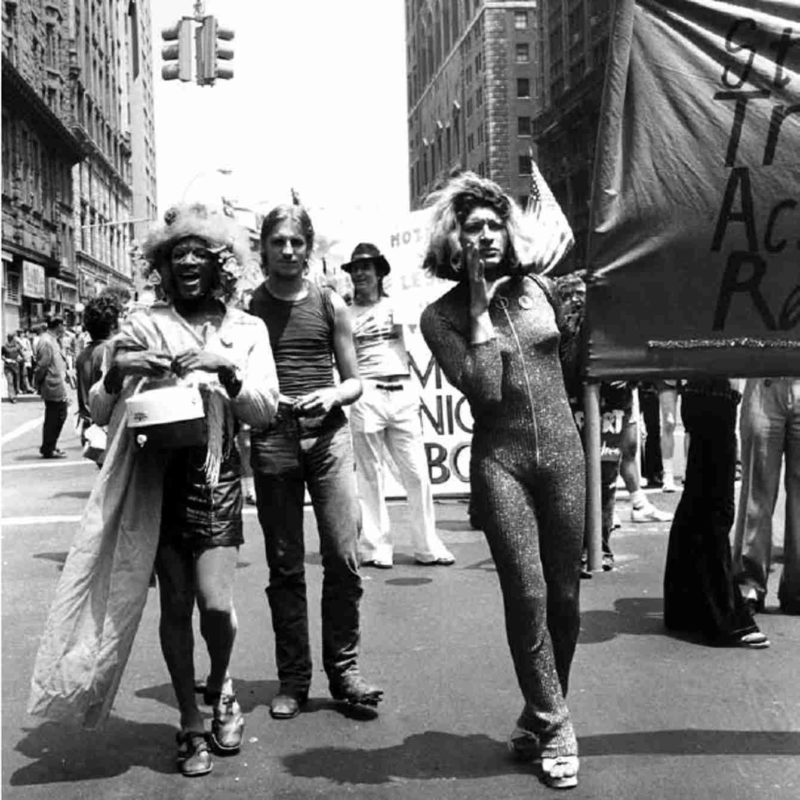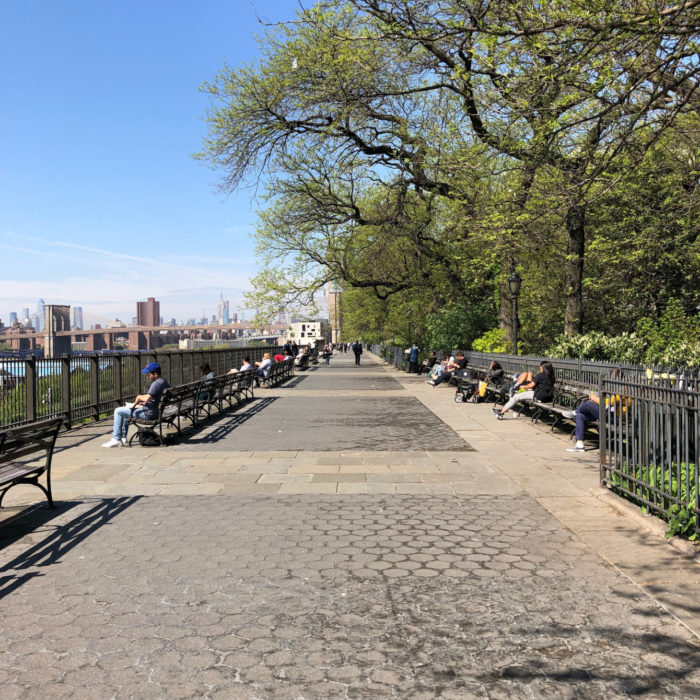
Brooklyn Heights Promenade
overview
From the 1950s through the 1980s, the Brooklyn Heights Promenade was one of the city’s most popular and well-known gay male cruising areas. It became contested ground during the 1960s as complaints led to a police crackdown and curfew.
During the day, the Promenade was a frequent destination for nearby residents. In the early 1960s, Charlotte Charlaque, one of the earliest documented cases of gender affirmation surgery, had become such a well-known presence that she was dubbed “Queen of the Promenade” upon her death.
History
The Promenade, a pedestrian walk that cantilevers out from Columbia Heights in Brooklyn Heights, is known for its views of New York Harbor and the Manhattan skyline. Opened in stages between 1948 and 1951, it had become a documented location for gay male cruising by 1952.
In the early 1960s as the Promenade’s reputation grew, gay men from other parts of the city flocked to Brooklyn Heights. In the words of Armand Whitehead, who moved to Brooklyn Heights in 1963, “It was absolutely wild. People did everything there.” In September 1962, the police responded to complaints from straight residents and the Brooklyn Heights Association with a crackdown, which included stationing plainclothes officers on the Promenade. In 1966, the Parks Department imposed a curfew from midnight to 6 AM at the request of the police, who told the Brooklyn Heights Press that they were responding to the many neighborhood residents who “objected to the ‘goings on’ there late at night.”
Eventually the police became more accepting, and according to Whitehead, “if they knew you from the neighborhood, [they] kind of just let it be.” In 1981, the New York Native reported on a still-active cruising scene, with its focus on the south end at Remsen Circle, “where those who cruise in cars can idle or park,” while at the north end, the playground in Squibb Park became at night “the biggest outdoor backroom in the world.” By the late 1980s-early 1990s, as the LGBT community had begun settling in other neighborhoods of Brooklyn, notably Park Slope and Fort Green/Clinton Hill, the Promenade fell out of favor as a cruising grounds.
Currently, plans to reconstruct a portion of the Brooklyn-Queens Expressway (BQE) are threatening the preservation of this public amenity.
Charlotte Charlaque
Documented as one of the three earliest cases of gender affirmation surgery in the world, Charlotte Charlaque (1892-1963) was born in Berlin to a Jewish family. In the late 1950s, she was living in Brooklyn Heights, moving to the Pierrepont Hotel in 1961, a few blocks from the Promenade. Upon her death in 1963, the front page of the Brooklyn Heights Press announced, “Death Ends Proud Reign Of the Promenade’s Queen,” detailing her long-time presence at the location, unique style, performances in various theatrical productions, and, unbeknownst to them, misleading and wildly embellished European past.
Entry by Gale Harris, project consultant, with additional content by Ken Lustbader, project director (June 2019; last revised January 2024), and made possible by the New York State Council on the Arts with the support of Governor Andrew M. Cuomo and the New York State Legislature
NOTE: Names above in bold indicate LGBT people.
Building Information
- Architect or Builder: Andrews and Clarke, consulting engineers; Clark and Rampuano, landscape architects
- Year Built: 1946-51
Sources
Fred Wasserman, “Brooklyn Lesbian and Gay History Exhibition Project Notes, “[Compiled for the Brooklyn Historical Society, 1993-1994]. [source of Whitehead quotes, 30]
Henrik Krogius, The Brooklyn Heights Promenade (Charleston, SC: History Press, 2011).
Hugh Ryan, When Brooklyn Was Queer (New York: St. Martin’s Press, 2019).
“’Operation Decoy’ Is in Effect on Promenade and Near St. George,” Brooklyn Heights Press and Cobble Hill News, September 20, 1962, 1.
“Promenade Closed,” Brooklyn Heights Press and Cobble Hill News, July 21, 1966, 1.
Robert Furman, Brooklyn Heights (Charleston, SC: History Press, 2015).
Stephen Greco, “The View from the Edge,” New York Native, May 18-31, 1981, 16, 21.
Do you have more information about this site?
This project is enriched by your participation! Do you have your own images of this site? Or a story to share? Would you like to suggest a different historic site?
